A herbaceous perennial plant Ivan-tea (Chamerion angustifolium = Epilobium angustifolium), also called Koporye tea, or narrow-leaved fireweed, is considered a type species of the Ivan-tea genus of the Cypress family. This plant popularly has a large number of other names, for example: doyatnik, magpie's eyes, ivan-grass, cypress, blackberry, Virgin's herb, Kuril tea, wild flax, plakun, scallop, weeds, tar, sweet clover, wheatgrass, field sage, etc. Such a plant is found in nature throughout the entire Northern Hemisphere, and it prefers to grow in clearings and forest edges, near water, in light forests, along embankments and ditches, as well as in dry sandy places and on damp ground. It has been noticed that willow-herb appears very first on burnt-out areas and clearings, then, as the site is "filled" with other plants, this culture gradually dies out. Often, willow tea in nature can be found in the immediate vicinity of the raspberry tree.
Content
Features of ivan tea
The height of the narrow-leaved ivan-tea bush can vary from 0.5 to 2 meters. A large number of additional buds are located on the vertical and horizontal roots of a creeping thick rhizome. In this regard, this culture can be successfully propagated by vegetative methods. The simple, erect, rounded stem is glabrous and leafy. Alternately located simple leaf plates can be short-petiolate or sessile, they have a linear-lanceolate shape, tapered to the apex, while to the base - wedge-shaped tapering or almost round. Also, the foliage is solid or finely iron-toothed along the edge. Their front surface is glossy and painted in dark green, and the back is red-purple, pinkish or green-gray. The length of the plates is about 12 centimeters and the width is about 2 centimeters. The length of the rare apical racemose inflorescence varies from 0.1 to 0.45 m, it consists of four-membered flowers with a nectar ring around the column, which can be painted white or pinkish. Ivan tea blooms in the second half of the summer period, while the flowering duration is just over 4 weeks. The fruit is a capsule similar in shape to a pod, inside which there are naked oblong seeds that ripen in the late summer or early autumn.
Ivan tea is grown both as a fodder crop and as a medicinal plant, because people have known about its medicinal properties for a long time. In addition, among all herbaceous plants growing in the forest, fireweed is considered the best honey plant.
Growing ivan tea (fireweed)
Sowing willow tea
You can choose absolutely any site for sowing willow tea. On this occasion, the people say: both in the field and in the forest to see a burgundy braid. This culture has one feature, it contributes to the restoration and treatment of those soils that are depleted in organic matter, for example, after forest fire. However, after the humus in the soil gradually accumulates, and other plants begin to grow on the places scorched by fire, the fireweed begins to disappear.
Ivan tea is considered a light-loving plant, however, in arid areas, the foliage on the bushes becomes shallow, and they themselves grow low. This must be borne in mind when choosing a suitable place for sowing. Before proceeding with the direct sowing of seeds, the site must be prepared, and for this, an unusual method is used. To do this, along the perimeter, the site must be dug in with a strip of loose soil, the width of which should be about 100 cm.After that, a fire should be made on the site, while using for this purpose flown leaves, cut branches, and other plant debris collected in the garden or in the garden ... The resulting coals should be scattered over the surface of the entire area, and on top they should be sprinkled with a layer of dry straw. Under the smoldering straw, all the roots and seeds of weeds and other plants burn out and ash appears, which is an excellent fertilizer for fireweed.
The seeds of ivan tea are very light, and if they are sown before winter, then in spring they will be washed out of the soil with melt water. In this regard, sowing should be done in spring after the snow cover has melted, while the seeds should be combined with sand or glued to strips of paper. It is necessary to deepen the seeds into the soil by no more than 15 mm, while the distance between the previously made grooves should be from 0.65 to 0.9 m. The grooves are filled with loose soil. Crops need watering, which is carried out very carefully, using a watering can with a shower head. It is recommended to water fireweed with rain or melt water. The seeds of this plant do not have a very high percentage of germination, and the seedlings that have appeared take a relatively long time to gain strength. In this regard, the grown bushes will bloom only in the next season. Between the bushes in a row, a distance of 0.3 to 0.5 m should be observed, but if the seedlings grow more densely, then they should be thinned or planted.
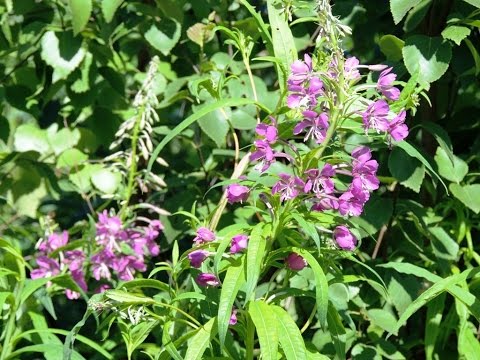

Watch this video on YouTube
Landing in open ground
For the propagation of ivan tea, vegetative methods are also used, which are distinguished by their speed and reliability. For this, a method of dividing the rhizome is used, especially since it is not so difficult to grow a plant from stolon roots. Root seedlings grow their vegetative mass much more rapidly, therefore, medicinal raw materials will be obtained in a relatively short time. You can divide and plant root cuttings in the last days of March or the first ones in April, as well as in autumn, or rather, in late September or early October. The roots extracted from the ground should be cut into pieces, the length of which can vary from 50 to 100 mm, they should be planted in open ground to a depth of 10 to 15 centimeters, while using the same planting scheme as when growing willow tea from seeds ... So, the distance between the bushes should be from 0.3 to 0.5 m, while the distance between the rows should be from 0.65 to 0.9 m.Immediately after the sprouts appear, the surface of the site must be covered with a layer of mulch, in as which you can use any organic material, for example: straw or mown grass. The thickness of the mulch layer should be approximately 10 centimeters.
Ivan tea care
In the first days before the emergence of fireweed shoots, the surface of the site should be constantly slightly damp. After the height of the young bushes is 10 to 12 centimeters, they will need to be watered only once every 7 days.On hot days, watering should be done twice a week. Loosen the surface of the soil near the bushes, as well as remove weeds at least 1 time in 4 weeks. In order to significantly reduce the number of weeding, loosening and watering, the surface of the site must be covered with a layer of mulch, while using only organic materials.
4 weeks after the sprouts appear, ivan tea is fed with a solution of infused chicken manure. And in the last autumn weeks they are fed with mineral fertilizers and ash.
Before wintering, it is necessary to shorten the shoots to 15 centimeters. Then the site should be covered with dried oak or walnut foliage, and you can also use needles. When spring comes, cut off last year's shoots and foliage flush with the soil surface to stimulate new stem and leaf growth.
Ivan tea has a very high resistance to diseases and pests. It is possible to grow bushes in the same place from 4 to 5 years, after which they must be removed from the soil, divided into parts and planted in a different area.
Collection and storage of ivan tea
How to collect Ivan tea
The collection is carried out during the flowering of fireweed (in July – August). After the bushes start pushing, they will irrevocably lose all their healing properties. During the harvesting of this plant, it should be harvested, fermented and dried. If everything is done correctly, then you will be able to both preserve and increase the medicinal properties of ivan tea.
Choose a sunny day to collect raw materials. The collection is carried out after 10 am, when all the dew has dried on the foliage. If the weather is hot outside, then this procedure is recommended to be performed in the evening. Hold the bush with one hand by the peduncle, while the other should grab the shoot and draw it from above to its middle, while all the foliage should remain in your hand. The leaf plates at the bottom do not need to be cut off, since they are very rough. You also need to leave 3 or 4 tiers of foliage under the flowers, since the plant still needs them. Dirty, dusty and diseased specimens are not suitable for collecting raw materials. And during the collection, you need to try not to injure the shoots. You should also be very careful and avoid getting bedbugs into the raw materials. So, just one such foul-smelling insect can spoil up to several kilograms of raw materials. If desired, you can make a separate collection of flowers, which are recommended to be put in tea.
Drying rules
In order for the collected raw materials to begin to ferment, it must be dried. First, sort through the foliage, removing all injured and affected by the disease. After that, it must be distributed in a dark room on a damp cotton or linen towel, while the layer thickness should be from 30 to 50 mm. The room temperature should be maintained between 20 and 24 degrees. The duration of the fermentation process is at least 12 hours, while for uniform drying, the raw material must be regularly agitated. To understand that the fermentation process has come to an end, you need to take one leaf plate and bend it in half. If at the same time you hear a crunching, breaking median vein, it means that the raw material has not yet reached the required condition. Properly dried leaves, when compressed into a lump, should not straighten.
Fermentation conditions for Ivan tea
It is necessary to understand in more detail the processes by which the foliage of fireweed becomes a fragrant medicinal tea. After the leaves have dried up properly, it is necessary to destroy the structure of the leaf plates, due to which they begin to release juice, and it contains special substances that promote fermentation. In the event that there is not enough juice, this will have an extremely negative effect on the fermentation of raw materials, which will not in the best way affect the smell and taste of tea.
Mash carefully all the foliage, while rolling it between your palms. After that, the raw materials should be very tightly filled in glass jars with a volume of 3 liters, which are covered with a damp cloth on top. The raw materials are kept for at least 36 hours, while they are removed to a dark place with room temperature. The raw materials pulled out of the cans should be loosened and dried in the oven, setting the temperature from 95 to 110 degrees, you do not need to close the door. The foliage must be stirred systematically. For storage, ready-made tea is poured into a plastic or glass container, which is tightly closed with a lid. In a dark place, such tea can be stored for about 3 years.
In the event that there is too much raw material, and there is no extra time, then instead of rubbing it with your hands, it is passed through a meat grinder. But then the medicinal properties and taste of the finished tea will not be so strong. The raw material crushed in this way is covered with a moistened cloth on top and kept for 6–8 hours at room temperature. Feel the raw material, if its consistency is similar to soft rubber, then you can start drying. The foliage is placed on a baking sheet in a thin layer. For drying in the oven, set the temperature to 100 degrees, remember that the door cannot be closed, and the raw materials must be systematically mixed. When the drying process comes to an end, the temperature should be slightly increased, in which case the tea can be calcined (this is done with coffee beans). This helps to improve the color and taste of the tea. To avoid burning the raw materials, the bottom of the oven must be covered with ceramic tiles. The tea mass will dry for no more than 2 hours.


Watch this video on YouTube
Properties of willow tea: harm and benefit
Useful properties of ivan tea
Leaf plates, shoots, roots and flowers of fireweed are used as medicinal raw materials. The foliage contains ascorbic acid, which is 3 times more than oranges. They also contain B vitamins, carotene, tannins, pectins, tannins, sugars, macronutrients: magnesium, calcium, potassium, trace elements copper, iron, manganese and other useful substances.
Fireweed has a styptic, enveloping, antipyretic, sedative and anti-inflammatory effect. It is considered a powerful natural antioxidant and purifier. In men, it increases potency. In addition, Ivan tea helps to alkalinize the blood, relieve anxiety-depressive state, painful sensations in the head area (it also helps with migraines), accelerate the processes of hematopoiesis. And it also prevents the degeneration of prostate adenoma into a malignant tumor, helps to normalize blood pressure, strengthen hair roots, slow down the aging of the skin, while they become more elastic and elastic.
This tea is used for the prevention and treatment of diseases such as anemia, gastritis, peptic ulcer, colitis, enterocolitis, pancreatitis and disorders in the biliary system, infertility, urolithiasis, bronchitis, sinusitis, pharyngitis, tracheitis, pulmonary tuberculosis, spleen pathology, dermatological diseases and metabolic-inflammatory skin diseases.
The taste, aroma and color of Koporye tea directly depend on the quality of the water used. Best of all, such a drink is obtained from spring or melt water. But how to brew tea correctly? To do this, combine a couple of small spoons of tea with 1-2 tbsp. freshly boiled water. After 10-15 minutes. the tea will be ready to drink. This tea is quite tasty and chilled. When warming up a cold drink, you need to remember that in no case should it boil, because because of this, its unique smell will disappear. It is recommended to drink this drink without sugar, but you can use honey, raisins, dried apricots, halva or dates.
You can also brew a similar tea using fresh herbs. At the bottom of the enamel pot, freshly harvested foliage should be laid, while the layer thickness should be from 30 to 50 mm. Melted or purified water is poured into it to a height of about 10 centimeters. The mixture should be heated over low heat. After boiling water, remove the saucepan from the stove and close it with a lid. After 10 minutes, the drink will be ready.
The infusion and decoction from rhizomes and foliage of fireweed also has medicinal properties. This plant is also included in a variety of medicinal herbal preparations.


Watch this video on YouTube
Contraindications
Ivan-tea drink should not be consumed if you have an individual intolerance. Also, you do not need to drink it with increased blood clotting and related diseases. If you drink this tea regularly for more than 4 weeks, diarrhea may start. The same undesirable side effect occurs when a relatively large amount of this drink is consumed.

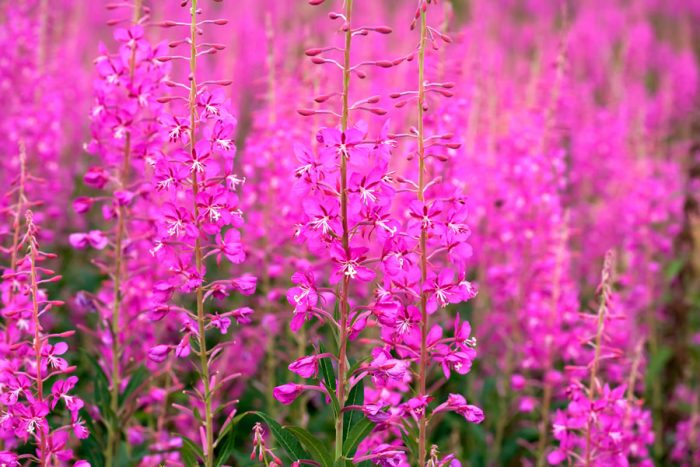
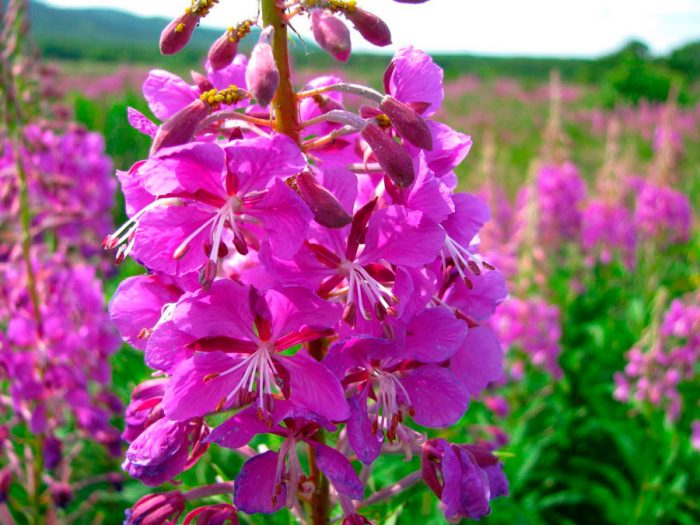
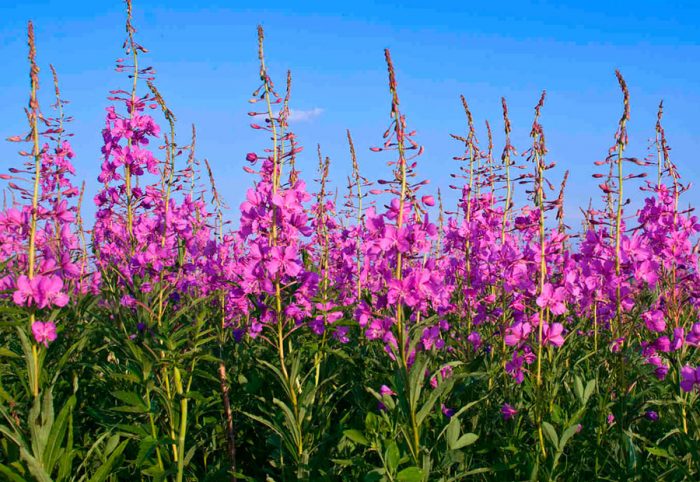
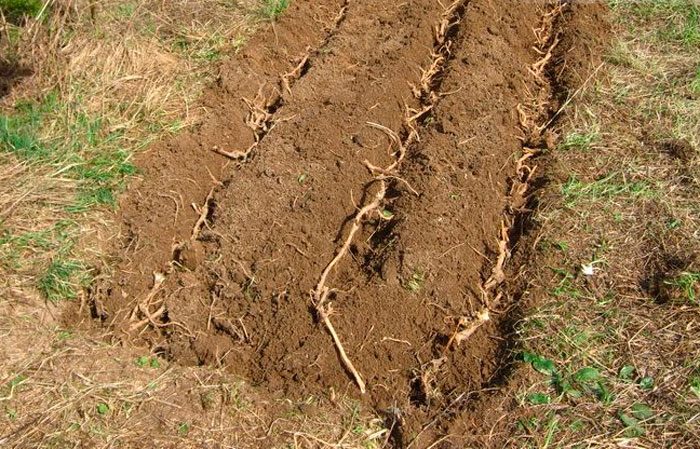
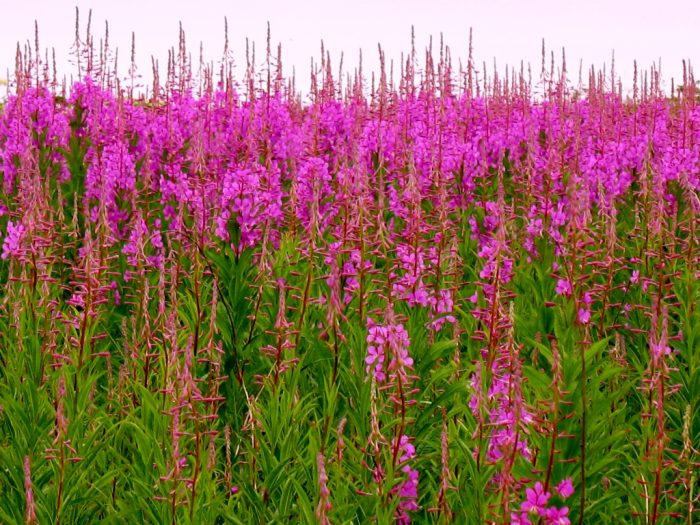
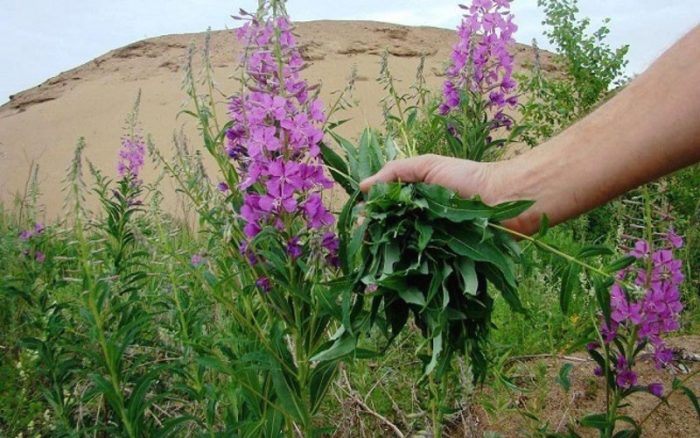
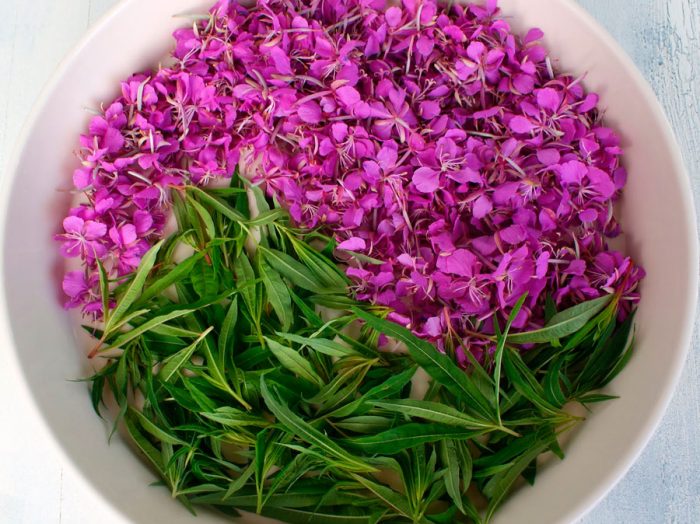

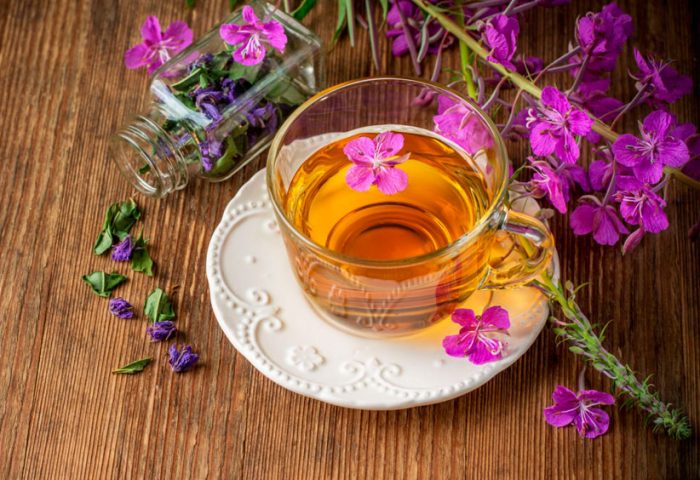
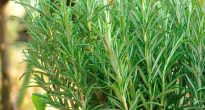









In my dacha Ivan tea grows with many spreading branches and small tassels of flowers on each branch. But I like the one more like here in the picture. Question: Is this variety so spreading or the soil is different for it.
And yet, a big request to you, tell me how to preserve the fireweed bushes so that they rise next year. Rostov region, summer is very hot, winter is snowless
If the leaves are frozen in the freezer immediately after fermentation, and then dried in the oven, then tea with such a rich taste and aroma is obtained that after it you will not want to drink any other.